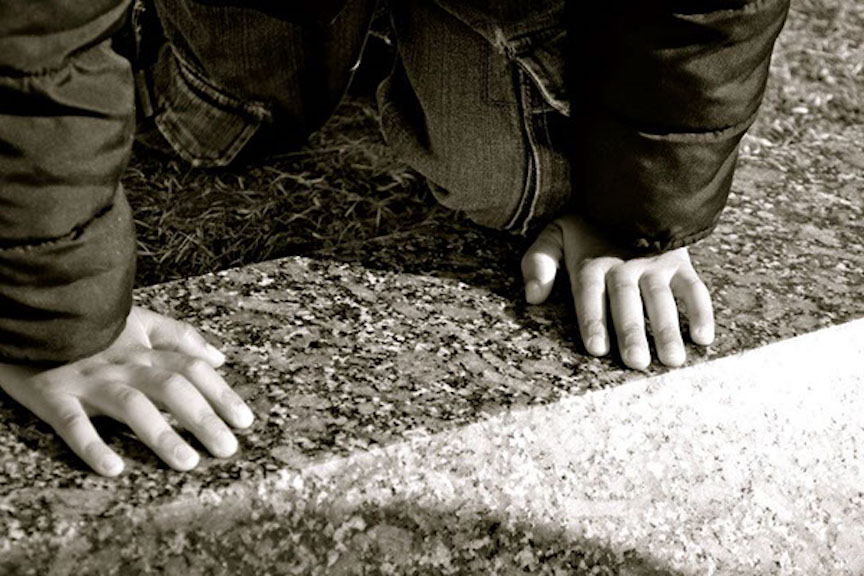Jenny Slate is overwhelmed, and very sweet. Her book Little Weirds came out this month shortly after her Netflix special, “Stage Fright,” and an engagement announcement. Little Weirds is made up of micro-essays, sketches and fairy-sized windows into Slate’s mind. The collection hovers around a time in Slate’s life when being alive became joyless, painful and lonely in the worst way. At times, the book flits about too much, jumping into the surreal without warning. It’s disorienting. But when Slate hits a truth, which she does again and again, her perspective asserts itself with a gentle, earnest: Here I am!
She drops the reader in right to the central problem in the first piece, “Treat” with a direct address: “There are so many times I want to be here just for your consumption.” Slate doesn’t know what parts of herself to keep and give away. The book comes from a moment in time, post-2016 election and a divorce, when the world has stopped making sense for her. The sky looks white in the day and the night. She can’t make little moments of joy for herself because she is too alone, or horny, or hungry, or afraid. She’s deep down. She writes, “Life has been so discouraging that I have forgotten why and how to fantasize, and I feel weak.”
Down in the dread, she shows us how just moving through the day can feel insurmountable. She goes grocery shopping and buys grape jelly, which a former partner liked, and brings it home “just to realize the horror of what [I’d] done, buying purple jelly for a person who is not there.” The accumulation of teeny blows makes everything a teeny bit scary. And if there are 100 teeny fears in every square foot, you can imagine how even getting dressed could feel like a skinning.
The beauty of this collection is in Slate’s newfound ability to let a little air into the room. She regrows the capacity to capture microscopic moments of wonder. A gardener mentions while landscaping Slate’s new yard in LA: “The only thing is that dogs love to smell the blossoms and they are actually very sticky, so your dog will have flowers on his face, and I don’t know if you’d like that.” And Slate gets to say, “I would like that.” It’s a moment of triumph, until now Slate’s been unable to express desire for something she wants, just for herself, just for joy.
Slate wants love, good love, not love where people only try their “half-best.” She finds it. In “A Prayer” she writes: “As the image of myself becomes sharper in my brain and more precious, I feel less afraid that someone else will erase me by denying me love.” Slate gets here by learning how to give herself little pep talks, by waking up with her dog’s paw in her hand and letting herself know, fundamentally, that this action is a sign of a good day to come. She writes in a particularly cogent piece called “Root: A Made-Up Myth” about pulling on the “cosmic clog” of misogyny she can feel rooted in her belly, tugging and tugging with the certainty that it will come loose. She writes about being wild, how she won’t stop.
The frustrating aspect of the collection is when Slate rushes from A to C too quickly. She tells us she’d die for love, then imagines planting herself into the ground and growing into a tree of flaming swords. It becomes a bit fever dream-y. These are the “little weirds” inside of her head. When she moves too quickly, it’s impossible to understand. “This book is a party,” she claims, and she is right. It’s party where you’ve definitely had a few drinks and now you’re looking for that friend you came with but you just can’t quite seem to find, and so you ask around but end up stuck in a conversation with a boy from high school who is quite high and speaks languidly about something that you really want to understand, but actually you have to pee so badly and where is your friend, weren’t you supposed to leave five minutes ago? What I mean is that sometimes, the book swallows itself. It goes too inside.
For one, she keeps dying. She dies aching and alone on Valentine’s Day, when her underwear…flies off in an antique store? She dies again as an old woman, and once more while making sardine sandwiches for her father. But that last one is a happy death. There’s no “how-to” guide for the book, which at times makes it hard for a reader to feel a sense of cohesion or clarity. Not all deaths are bad. Section breaks are seemingly arbitrary, often placed at the top or bottom of a page, and Slate flies from birth to death with grand proclamations, almost thrashing.
Yet she comes back down to earth. She’ll make you laugh, of course, describing a voice like “a fart under the covers,” showing how dressing up has become a donning of “fabric that has been made into a certain shape to help remind you of [her] butt and vagina”, and revealing the moment a psychic told her simply to “grow up.”
Little Weirds is powered by Slate’s nervous energy, and you can feel her trembling to make a sound at almost every page turn. The take away—which we would all do well to understand—is that it is enough to feel some warm air on our skin, and to “take it as a sign that it is alright to be alive as I am, just as I am, and to keep trying.” Also, it wouldn’t be so bad if every now again, we kissed ourselves on the bare skin of our own shoulders.




